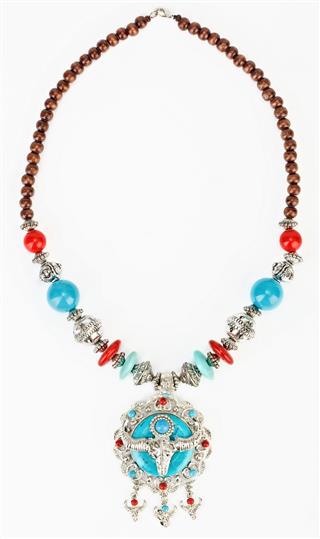
Apart from gold and other precious metals, Romans used glass to make their jewelry. Their jewelry gives us an insight into the culture of ancient Rome.
Just like other ancient civilizations, Rome also had its distinct strata of social classes. In the Roman society, jewelry was worn for indicating the social status of a person and attaching pieces of clothing rather than beautification. Gold was used by the artisans and jewelers for carving the adornments and jewelry as it was believed to be the metal of the Gods and supposed to have descended from the sun.
Influence of Other Cultures on Early Roman Jewelry
Early Roman jewelry were influenced by the Greek and Etruscan art. Subsequently, the influence of Egyptian culture on the ancient Roman arts and jewelry came to light. An example of such an intrinsic influence of Greek and Egyptian cultures on Roman designs is the Herakles Knot which was worn explicitly to guard the wearer from evil spirits. Rome became an empire when it conquered the Mediterranean region, North Africa, Europe and Egypt among other places, this led to the incorporation of different designs of the above mentioned cultures in the Roman jewelry.
During the rule of Augustus, a reign of peace named as Pax Roman prevailed in Europe and the Mediterranean regions and contributed in creating a prolific artistic arena, making ancient jewelry especially the glass jewelry designs even more popular. Other than gold, the materials used in jewelry making were bronze, Roman glass, bone beads and precious gemstones which were excavated from far off places like Persia, Far East, Indus Valley, etc. Diamonds, emeralds and sapphires found their way from the silk route to the Roman land to appease the rich and mighty of this civilization.
Ring
Romans liked to wear big rings which drew attention and revealed the status of the wearer. A gold ring often contained a huge gemstone or Roman glass which was generally worn by the Senators and the bureaucrats. The common people referred as the Plebeians were allowed to wear only rings made of iron. However, some Plebeians were awarded the right to wear the golden rings for their bravery or special service to the state. But gradually such stringent rules were relaxed during the reign of Justinian I. Women of ancient Rome were more inclined to wear multiple rings of varied materials and designs on their hands without the constraints of social classes.
Bracelet
Bracelets made of gold and pearls were equally fashionable in the ancient Roman which were worn in both the hands. Bracelets in the shape of coiling snakes (which were fastened by gold pins) were often seen on the hands of the Roman women. The design of the coiling snake was particularly important to the Romans as it was considered as a self-eating, circular animal which was a perfectly constructed living organism, thus symbolizing immortality. As the bracelets had no practical use, they were worn purely for decorative purposes.
Brooch
Another common and most practical jewelry in that period was the brooch. Its purpose was to attach pieces of clothing and bring sophistication to the attire. Instead of sewing clothing items, Romans liked to fastened them with fibula (a clothing brooch) and clasps which were made of gold or other precious metals. Fibulas were decorated with a carved stone especially cameo portraits and other popular designs.
Other Jewelry Items
Amulets called bulla were worn by young boys from the time of their birth which was believed to be a shield against the evil eye. It was in the shape of a gold chain, containing a pouch and was a phallic symbol. The Romans believed that the males are the strongest out of the two sexes. Thus, to protect the young ones of this gender, they were made to wear talismans or amulets. Gold rings with phallic symbol in its design were especially made for the young boys in order to bring good fortune. The practice of signet rings or seal rings was started by the Romans which helped them to imprint the seal with hot wax on important documents. These rings were usually worn by upper class prominent males of the society. Another accomplishment of this ancient Roman period was the creation of the coin rings which carried the portrait of the ruling Emperor or had the engraving of Roman insignia on it. Roman women preferred to wear necklaces, earrings and a number of armlets. The total number of jewelry worn by them on an arm was seven or more.
Romans were people of power and wealth who demonstrated their riches through their jewelry and lifestyle. Sadly, such an exuberant era did not last forever as corruption and greed crept in and slowly ate away the foundation of their society.










